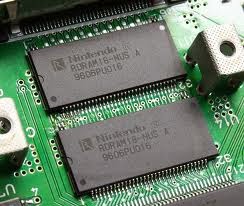Rambus Dynamic Random Access Memory (RDRAM) is a memory subsystem that promises to
transfer up to 1.6 billion bytes per second. The subsystem consists of
the random access memory, the
RAM controller, and the bus (path) connecting RAM to the
microprocessor and devices in the computer that use it. Direct Rambus (DRDRAM),
a technology developed and licensed by the Rambus Corporation, will be used
with microprocessors beginning in 1999.
High-speed RAM is expected to accelerate the growth of visually intensive interfaces such as 3-D, interactive games, and streaming multimedia. Rambus is intended to replace the current main memory technology of dynamic random access memory (DRAM). Much faster data transfer rates from attached devices such as videocams using FireWire and the Accelerated Graphics Port (AGP) make it important to reduce the bottleneck in getting data into the computer, staging it in RAM, and moving it throught the microprocessor and to the display or other output devices.
High-speed RAM is expected to accelerate the growth of visually intensive interfaces such as 3-D, interactive games, and streaming multimedia. Rambus is intended to replace the current main memory technology of dynamic random access memory (DRAM). Much faster data transfer rates from attached devices such as videocams using FireWire and the Accelerated Graphics Port (AGP) make it important to reduce the bottleneck in getting data into the computer, staging it in RAM, and moving it throught the microprocessor and to the display or other output devices.
Direct Rambus (DRDRAM) provides a two-byte (16 bit) bus rather
than DRAM's 8-bit bus. At a RAM speed of 800 megahertz (800 million cycles per
second), the peak data transfer rate is 1.6 billion bytes per second. Direct
Rambus uses pipelining to move data from RAM tocache memory levels that are closer
to the microprocessor or display. Up to eight operations may be underway at the
same time. Rambus is designed to fit into existing motherboardstandards. The components that are
inserted into motherboard connections are called Rambus in-line memory modules
(RIMMs). They can replace conventional dual in-line memory modules.
A proposed alternative to DRDRAM is SyncLink DRAM (SDRAM).



















0 comments:
Post a Comment